In this post i'll cover how you can get SQL Server to return data as XML by using the FOR XML command and how you can use XML as input for updating records and as a rich argument for row returning stored procedures using the OPENXML command.
There are lots of reasons you may want to get data out of a database as XML:
- You may be building an AJAX app and want to send XML to the client directly for processing by your client-side JavaScript
- You may want to use XSL to transform your data into some format such as HTML or a CSV
- You may want to export data and store it in a form which retains its original structure
These reasons also give you reasons for needing to pass XML into your database for example with the AJAX app you may want to receive changes as XML from the client and post them straight to a stored proc that updates your tables.
Examples are in VBScript using ASP and ADO.
Getting SQL Server to return XML
The key to getting SQL Server to return XML is the FOR XML command. It comes in three flavours:
- FOR XML RAW
- The least useful, RAW mode simply outputs the rows returned by your query as <row> nodes with the columns being either elements within this node or attributes of it as you define.
- FOR XML AUTO
- Automagically translates your SQL query, joins and all into suitable nested XML elements and attributes. For example if you are joining Orders to OrderItems the XML output will be OrderItem nodes nested within the associated Order node. You can alter the naming of the nodes by aliasing your table and column names but that's about it.
- FOR XML EXPLICIT
- Explicit mode allows the most customisability but it's also the most fiddly requiring you to alias all your columns names to a specific format which describes which nodes they should belong to.
You'll mostly use AUTO mode because it gives you the most useful results in the least amount of time so here it is in an example:
SELECT Order.*, OrderItem.*
FROM Order
INNER JOIN OrderItem
ON Order.order_key = OrderItem.order_fkey
WHERE Order.customer_fkey = 1
FOR XML AUTO
All you do is tag FOR XML AUTO on to the end of your query, that's it! The output will look something like this:
<Order order_key="1" customer_fkey="48" date_placed="24/08/2006 12:31">
<OrderItem orderitem_key="123" order_fkey="1" product_fkey="234" list_price="£14" />
<OrderItem orderitem_key="124" order_fkey="1" product_fkey="64" list_price="£3" />
<OrderItem orderitem_key="125" order_fkey="1" product_fkey="73" list_price="£27" />
</Order>
If you run this in Query Analyzer you'll notice in the results pane it looks like the XML has been split into rows. We need to use an ADODB.Stream object to get at the output properly, thus:
Set conn = Server.CreateObject("ADODB.Connection")
Set cmd = Server.CreateObject("ADODB.Command")
Set strm = Server.CreateObject("ADODB.Stream")
conn.Open "Provider=SQLOLEDB;Data Source=myServerAddress;" & _
"Initial Catalog=myDataBase;User Id=myUsername;Password=myPassword;"
strm.Open
Set cmd.ActiveConnection = conn
cmd.Properties("Output Stream").Value = strm
cmd.Properties("Output Encoding") = "UTF-8"
cmd.Properties("XML Root") = "Root" 'this can be anything you want
cmd.CommandType = adCmdText
cmd.CommandText = strSQL
cmd.Execute , , adExecuteStream
Set xmlDoc = Server.CreateObject("Microsoft.XMLDOM")
xmlDoc.async = "false"
xmlDoc.LoadXML(strm.ReadText)
strm.Close : Set strm = Nothing
Set cmd = Nothing
xmlDoc now contains our XML to do with as we will.
Passing XML into SQL Server
The easiest way to get XML into SQL Server is as a parameter of a stored procedure thus:
cmd.Parameters.Append cmd.CreateParameter("somexml", adVarChar,
adParamInput, 8000, xmlDoc.xml)
You then use two System Stored Procedures along with the OPENXML command to SELECT from the contents of the XML parameter as if it were a table:
DECLARE @idoc int
EXEC sp_xml_preparedocument @idoc OUTPUT, @somexml
SELECT * FROM OPENXML (@idoc, '/Root/Order') WITH (Order)
EXEC sp_xml_removedocument @idoc
OPENXML takes the prepared XML document and an XPath expression telling it which nodes it is taking into account. The WITH statement in this case tells OPENXML that the nodes it is working on are of the same schema type as the rows in the Order table.
The result of this call is a list of records of the same schema as the Order table but which have actually come from the passed in XML document. Because the schema is that of Order you can put an INSERT INTO [Order] in front of the SELECT and this will add the rows from the XML to the Order table. You probably wouldn't want to do that but you get the idea.
You don't have to have a table representing the schema of the XML you're passing in in your database. WITH also accepts a normal schema declaration i.e. comma delimited column names with their types and which node this maps to in the XML:
SELECT order_key, customer_fkey, description
FROM OPENXML (@idoc, '/Root/Order')
WITH (
order_key int '@order_key',
customer_fkey int '@customer_fkey',
description nvarchar(100) 'description'
)
The advantage of being able to do this is that you can pass complex structured criteria into one of your stored procedures and use OPENXML to turn it into a rowset which you can use to JOIN to the tables in your database. Powerful stuff with a large number of applications in both improving querying data and updating it.

 and selecting "Native Win32 interface for Win NT/2000/XP". Re-run the wizard again from the EAC menu to configure your drives.
and selecting "Native Win32 interface for Win NT/2000/XP". Re-run the wizard again from the EAC menu to configure your drives. After this finishes you get a status log that gives you a quality percentage, AccurateRip confidence and and errors for each track.
After this finishes you get a status log that gives you a quality percentage, AccurateRip confidence and and errors for each track. Thankfully the very nice people responsible for the
Thankfully the very nice people responsible for the 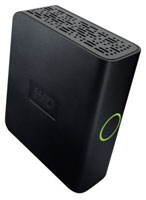 Storage space is only getting cheaper and today you can pick up a 500GB external hard disk, enough for 700 uncompressed albums, for less than £80; the Western Digital
Storage space is only getting cheaper and today you can pick up a 500GB external hard disk, enough for 700 uncompressed albums, for less than £80; the Western Digital 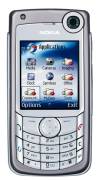 I've recently been going through the yearly trauma of picking a new phone as my free upgrade. It's the same every time - there is never one phone that meets all my criteria so I have to go for the best compromise. The phone I'm upgrading is a Nokia 6680 which is a rather large Symbian smartphone, lacking in both the processor speed and memory stakes. The criteria for my new phone are therefore:
I've recently been going through the yearly trauma of picking a new phone as my free upgrade. It's the same every time - there is never one phone that meets all my criteria so I have to go for the best compromise. The phone I'm upgrading is a Nokia 6680 which is a rather large Symbian smartphone, lacking in both the processor speed and memory stakes. The criteria for my new phone are therefore: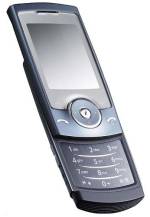 I've only ever had Nokia phones and have stuck with them mainly because they were a lot more usable than other brands. Nokia's current offerings were leaving me a bit cold however so I've been thinking "surely the other brands must have caught up" and indeed Sony Ericsson's sales are topping Nokia's in the UK at the moment. Anyway I thought I'd give another brand a try so I went for a Samsung U600 as I like the look of their sliders and although it's not a smartphone it is from their new "Ultra Edition 2" line so I thought it would meet my needs.
I've only ever had Nokia phones and have stuck with them mainly because they were a lot more usable than other brands. Nokia's current offerings were leaving me a bit cold however so I've been thinking "surely the other brands must have caught up" and indeed Sony Ericsson's sales are topping Nokia's in the UK at the moment. Anyway I thought I'd give another brand a try so I went for a Samsung U600 as I like the look of their sliders and although it's not a smartphone it is from their new "Ultra Edition 2" line so I thought it would meet my needs.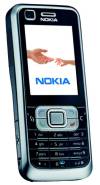 So now I'm back to square one and thinking I'm either going to get a Nokia or another brand only if it's running Symbian so I can be assured of a certain amount of base functionality. So the next two candidates were the Nokia 6300 or the Sony Ericsson W950i - the Sony is missing the all important camera and the Nokia isn't running Symbian so not clear cut by any means. I may have finally found the answer with the Nokia 6120 which is a smartphone, has a camera and is a centimetre narrower and half a centimetre thinner than the 6680. Only problem with this one is that it's not currently available on Orange so I've got to wait for it - Doh!
So now I'm back to square one and thinking I'm either going to get a Nokia or another brand only if it's running Symbian so I can be assured of a certain amount of base functionality. So the next two candidates were the Nokia 6300 or the Sony Ericsson W950i - the Sony is missing the all important camera and the Nokia isn't running Symbian so not clear cut by any means. I may have finally found the answer with the Nokia 6120 which is a smartphone, has a camera and is a centimetre narrower and half a centimetre thinner than the 6680. Only problem with this one is that it's not currently available on Orange so I've got to wait for it - Doh! Well, i'm back. Thanks to Yahoo! and the BBC for a great weekend. It didn't get off to the best of starts what with the lightning and broken WiFi and all but everyone made the best of it.
Well, i'm back. Thanks to Yahoo! and the BBC for a great weekend. It didn't get off to the best of starts what with the lightning and broken WiFi and all but everyone made the best of it.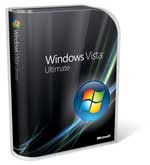 Being a technology obsessed geek, the Ultimate Edition was the only viable option but it came as a roundhouse kick to the face when i learnt this would retail at £350! "Guess I'll be sticking to XP for now then", I though mournfully.
Being a technology obsessed geek, the Ultimate Edition was the only viable option but it came as a roundhouse kick to the face when i learnt this would retail at £350! "Guess I'll be sticking to XP for now then", I though mournfully.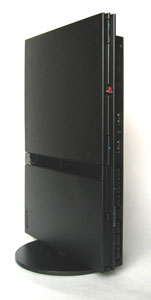 We still need a hard disk for bulk storage of documents, media etc but a NAS over gigabit ethernet can potentially have an access time of 125MB/s which is comparible to a local hard disk. We've reached the point where the only people who need a hard disk are those who rely on consistant real-time access to disk i.e. audio and video editing and the like and these folk tend to use firewire disks anyway.
We still need a hard disk for bulk storage of documents, media etc but a NAS over gigabit ethernet can potentially have an access time of 125MB/s which is comparible to a local hard disk. We've reached the point where the only people who need a hard disk are those who rely on consistant real-time access to disk i.e. audio and video editing and the like and these folk tend to use firewire disks anyway.
